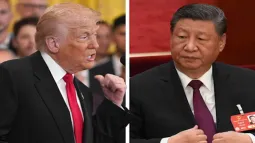
As an advisory to the public and financial institutions, the Reserve Bank of India (RBI) released a notice regarding the widespread use of spurious ₹500 banknotes. These near-impossible-to-identify counterfeit banknotes, made with great sophistication, have generated alarm because of their rising use in routine transactions. Lawmen and financial officials have been put on their toes, and people are being urged to remain cautious and scrutinize banknotes carefully.
Sophisticated Fakes Evade Detection
According to the latest intelligence conveyed by the Union Home Ministry, counterfeit ₹500 notes have been circulated with such precision that even trained officials are finding it difficult to distinguish them from originals. The counterfeits replicate the official design and employ nearly the same level of printing quality and color tones, which makes them highly deceptive in low-profile transactions.
The RBI has reported that these notes are being circulated predominantly in rural and semi-urban areas where vigilance is low and English literacy levels may be limited. These areas are most vulnerable, as the people may not possess the equipment or know-how to detect minor discrepancies, particularly those embedded in the textual features of the notes.
Major Error Detected in Fake Notes
Perhaps the most telling tip-off of a fake ₹500 note is a typographical slip in the misspelling of the word "Reserve." In some specimens of counterfeits, the letter "e" has inadvertently been replaced with an "a," and so the word reads as "Raserve." Though the mistake is small, it is an important clue that separates such currency from genuine currency. However, the design of the note renders this shortfall difficult to detect without intense scrutiny.
Another problem is that even frontline bank staff are unable to detect these notes during routine transactions. Only those who have been trained specifically to detect fakes or those who have continuous contact with currency verification are likely to pick up on the discrepancies.
Official Measures and Security Directives
With a view to check this growing threat, the government has requested some of its agencies like the Directorate of Revenue Intelligence (DRI), Financial Intelligence Unit (FIU), Central Bureau of Investigation (CBI), National Investigation Agency (NIA), and Securities and Exchange Board of India (SEBI) to investigate the source and channel of distribution of these spurious notes. Financial regulators and law enforcement agencies have been assigned topmost priority for coordination.
Police officials have also highlighted greater public alertness. The public may check vital security features on the ₹500 note, including quality of print, embedded security thread, uniformity of watermark, and stability of ink. A smudge-generating note on your hand or with typographical errors must be reported to the nearest police or bank immediately.
Cross-Border Involvement Suspected
Initial investigations point towards possible cross-border involvement in the printing and smuggling of these counterfeit notes. Intelligence reports suggest that the forged ₹500 notes may be printed in Pakistan-based plants and smuggled into India via border regions, particularly via Bangladesh. These routes have been suggested in earlier cases of smuggling of counterfeit currency.
The authorities are also convinced that the activities can be employed to fund illicit or anti-national activities. The implications of these transactions are not just economic fraud—there is a high potential for them to undermine national security and finance the underworld syndicates. The government is still monitoring the situation closely with an eye to intercepting these notes at their source.













